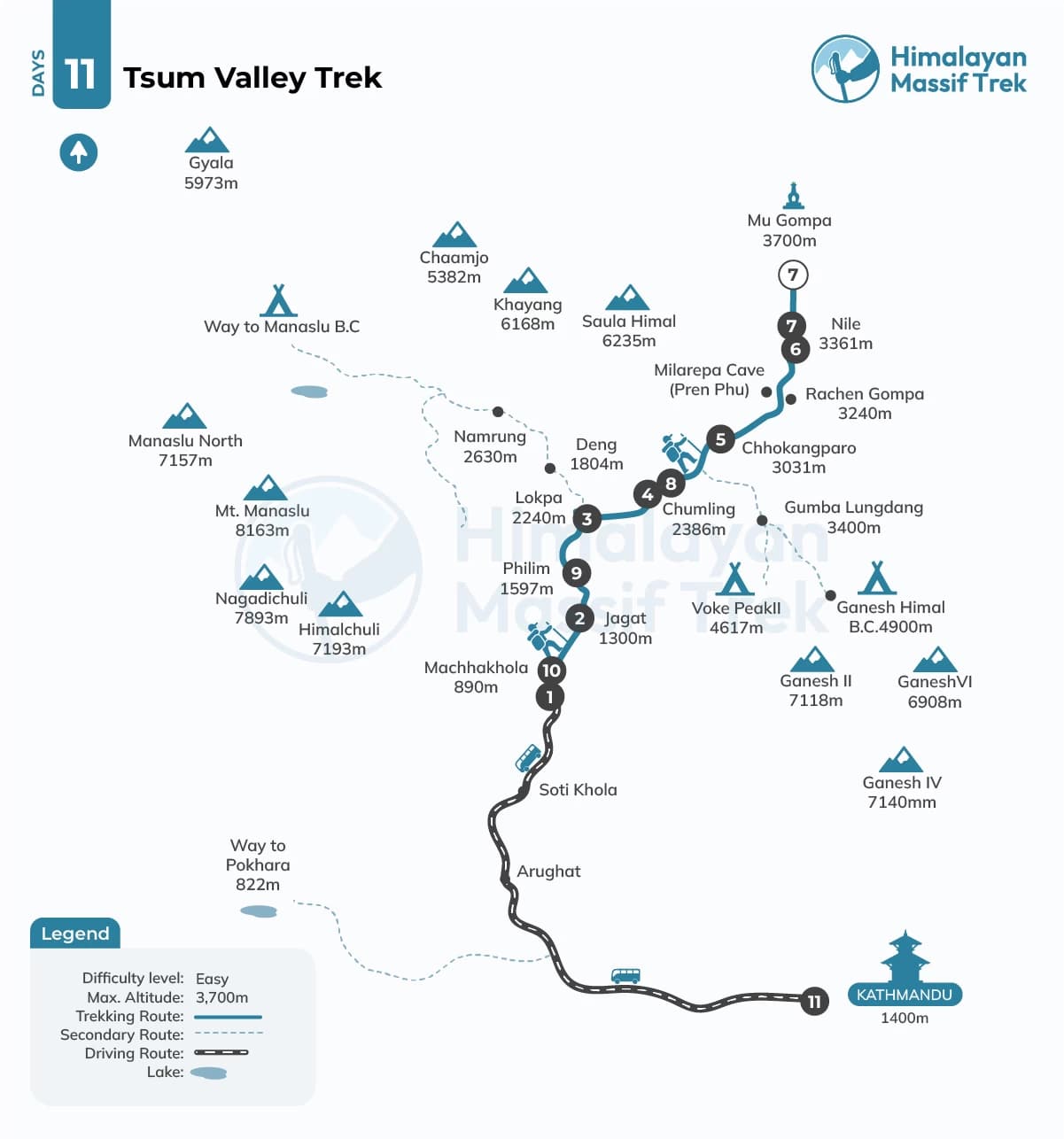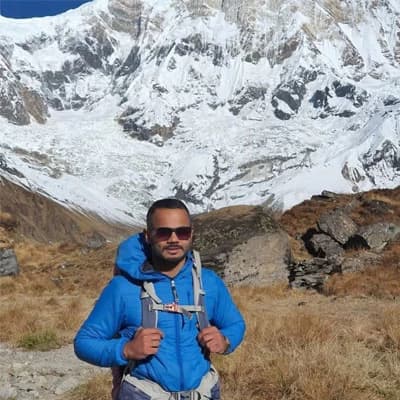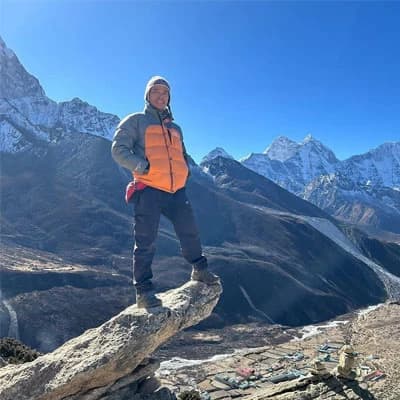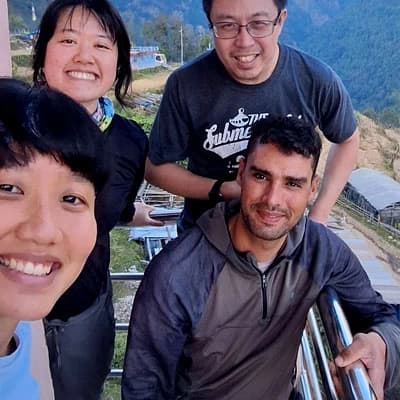The Tsum Valley Trek is an 11-day journey into Nepal’s hidden Himalayan gem, offering a unique blend of cultural immersion and natural beauty. Trek through Tibetan-influenced villages, visit ancient monasteries like Mu Gompa, and experience the region’s rich Buddhist heritage. Surrounded by stunning views of the Manaslu range, Ganesh Himal, and Buddha Himal, this trek provides a peaceful and authentic adventure. It is ideal for those seeking serenity, spiritual connection, and an escape into the untouched beauty of the Tsum Valley.
Tsum Valley Trek
The 11-day Tsum Valley Trek is an unforgettable adventure into one of Nepal’s most remote and culturally rich regions. Designed for trekkers of all ages and fitness levels, this trek offers a rare opportunity to explore the serene beauty of the Manaslu region without the extreme challenges associated with the standard Manaslu Circuit.
The Tsum Valley Trek is an excellent option for those who want to explore the best of the Manaslu region but are hesitant about the challenges of the standard Manaslu Trek, which includes high altitudes and difficult terrain like Dharmasala and Larke La Pass. With its moderate terrain and manageable altitudes, the Tsum Valley Trek offers a more accessible experience while still showcasing the region’s rich culture, spirituality, and stunning landscapes.
Starting with a scenic drive from Kathmandu to Maccha Khola, the journey follows a picturesque trail through lush forests, terraced fields, and traditional villages like Jagat, Lokpa, and Chumling.
As you ascend into the mystical Tsum Valley, you will encounter charming settlements such as Chekampar, Nile, and Mu Gompa, where the Tibetan-influenced culture of the Tsumba people flourishes. Sacred sites like Rachen Gompa and the revered Milarepa Piren Phu Cave offer profound spiritual experiences and glimpses into centuries-old Buddhist traditions.
One of the trek’s most rewarding moments comes on Day 7 at Mu Gompa, the highest point of the route. This place offers panoramic views of majestic peaks, including Ganesh Himal, Himalchuli, Manaslu, Buddha Himal, and Shringi Himal.
The return journey takes you through the vibrant landscapes of Chumling and Philim, concluding with a scenic drive back to Kathmandu.
This carefully designed trek offers a perfect mix of natural beauty, cultural richness, and tranquility, making it ideal for families, cultural enthusiasts, and trekkers seeking a peaceful adventure.
Highlights
- Trek into the remote Tsum Valley, a hidden gem of the Manaslu region.
- Visit Mu Gompa and Rachen Gompa, renowned monasteries in the Tsum Valley.
- Explore the Tibetan-influenced villages of Chekampar, Nile, and Lokpa.
- Discover the sacred Milarepa Piren Phu Cave, a spiritual site of deep significance.
- Enjoy stunning views of Ganesh Himal, Manaslu, Buddha Himal, and Shringi Himal.
- Immerse in the unique culture and traditions of the Tsumba people.
- Experience the peaceful, less-crowded trekking route of Tsum Valley.
Tsum Valley Trek Itinerary
The adventurous Tsum Valley trek itinerary begins with a long, scenic drive from Kathmandu to Maccha Khola. The journey transitions from smooth highways to bumpy, winding mountain roads, offering an immersive experience of Nepal’s diverse landscapes.
Unlike trekking days where you explore on foot, this day provides a unique chance to witness rural life, riverside vistas, and lush greenery from the comfort of a vehicle.
Day 2 of the trek takes you deeper into the heart of the Manaslu Conservation Area, offering an exciting and immersive experience on the trail. After a hearty breakfast, the journey begins with a crossing of the Budhi Gandaki River over high suspension bridges, setting the tone for the day.
As you walk through lush forests, you will encounter a variety of small villages, mostly inhabited by the Gurung and Tamang communities.
Trekkers will be treated to stunning views of cascading waterfalls, occasional wildlife sightings, and vibrant natural landscapes. The changing scenery, from dense forest to more open terraced fields, adds to the diversity of the day's journey.
Finally, as you arrive at Jagat, a traditional village nestled among the hills, you'll be welcomed by its stone-paved lanes and rich cultural atmosphere. This village is a key checkpoint for entering the Manaslu Conservation Area.
On Day 3, the trek takes a scenic route as you follow the Manaslu Circuit trail before branching off toward the trek to sacred Tsum Valley.
The journey begins with a walk through lush forests, crossing rivers and streams while passing the charming villages of Salleri and Siribass. The trail leads to Philm, a larger Gurung village known for its cultural heritage and warm hospitality.
From here, the path winds toward the entrance to the valley at Lokpa, where you will be greeted by stunning views of the Himalchuli and Boudha Himal peaks. Lokpa offers the first glimpse of the secluded Tsum Valley, marking the transition into a unique cultural and spiritual journey.
On Day 4, the trek features steep climbs through dense forests of pine, juniper, and rhododendron, with occasional glimpses of the surrounding peaks. Despite the challenging ascents, the breathtaking mountain views keep you motivated.
By midday, you'll reach Chumling, a picturesque village with stone-paved streets and traditional Tibetan-style houses. The village's unique architecture and peaceful atmosphere make it a perfect place to unwind.
After lunch, take the opportunity to explore the local spiritual sites, including Panago Gompa and Gurwa Gompa. These gompas offer a deeper understanding of the region's rich Buddhist heritage and provide an enriching cultural experience.
On Day 5, the trek takes you into the Upper Tsum Valley, where the preserved Tibetan heritage becomes more evident. As you navigate through a landslide area and climb a high ridge, you will be treated to stunning views of Ganesh Himal. For those up early enough, the sunrise over Shringri Himal is breathtaking.
As you enter the sacred Tsum Valley, you will notice the stronger Tibetan influence in both the houses and people, reflecting the region’s deep historical connections to Tibet. Chekampar, also known as Chokhangparo, marks the heart of the Upper Tsum Valley.
This village, perched on a high ridge, offers incredible views and is home to spiritual sanctuaries like monasteries and mani walls, enriching the remote Tsum Valley trek.
On Day 6, the trek takes you to the Nile, the last settlement in the sacred Upper Tsum Valley, where the spiritual essence of Tsum Valley is felt strongly.
As you make your way through this peaceful region, you will visit Milarepa’s Cave, a significant spiritual site where the famous Buddhist scholar and yogi, Milarepa, meditated during his travels through Nepal and Tibet in the 11th century. The cave offers a profound experience for those seeking a deeper connection to the region’s Buddhist heritage.
The trail ascends into the remote valleys of Gorkha District where you will also visit Rachen Gompa, a vital monastery in the area, that contributes to the spiritual sanctuaries of Tsum Valley.
This peaceful village, located near the Tibetan border, offers a serene atmosphere where traditional Tibetan architecture and Buddhist influences are prevalent. Nile is the last village before the Tibetan border, and it serves as a significant cultural and spiritual highlight on the trek.
Day 7 involves a rewarding trip to Mu Gompa, the highest and most significant monastery in the Tsum Valley trek in Nepal. Mu Gompa is renowned for its spiritual significance, vibrant murals of Tara and Guru Padmasambhava, and its role as a spiritual sanctuary for Buddhist monks.
Trekkers visit Milarepa’s Cave along the way, participate in traditional rituals, and light oil lamps as a symbolic offering. Staying overnight at Mu Gompa allows for a more immersive experience while returning to the Nile is an alternative option.
This part of the 11-day trekking trip to Tsum Valley highlights the spiritual essence of Tsum Valley and provides insight into the Tsumbas’ unique lifestyle and customs.
The descent from Nile or Mu Gompa to Chumling takes you back through the Lower Tsum Valley, where the scenery transitions from rugged mountain terrain to greener landscapes. The trail offers a refreshing change in vegetation, with lush greenery returning as you move to lower altitudes.
Trekking to Tsum Valley offers a blend of natural beauty and cultural discovery, and Chumling is an ideal place to reflect on the experience. Revisit the tranquil surroundings, explore local monasteries, and engage with villagers to learn more about their customs.
This segment of the Tsum Valley 11-day trek in Nepal provides a relaxed pace after the spiritual highs of Mu Gompa, preparing for the remaining journey.
On Day 9 of the Tsum Valley trek in Nepal, the trail from Chumling to Philim offers a captivating mix of natural beauty and cultural experiences. Descending through terraced fields and verdant forests, you will cross the Siyar Khola River via a suspension bridge, marking your passage into more scenic landscapes.
Along the way, you will encounter the impressive Samba Falls, a refreshing highlight of this leg. The path winds through traditional villages, where trekkers can observe centuries-old Buddhist traditions and interact with locals known for their warm hospitality.
The route also provides stunning views of Shringi Himal, enhancing the remote, tranquil feel of this off-the-beaten-path Himalayan trek. Philim, your destination, is a peaceful village surrounded by lush fields and rich cultural heritage.
It serves as a vital waypoint connecting the Tsum Valley and Manaslu regions, offering a serene rest stop before continuing the journey.
On Day 10, the trek from Philim to Maccha Khola takes you along the scenic Budhi Gandaki River trekking paths, marking the final full day of your trek.
The trail descends from Philim, offering views of the rugged terrain as you hike along ridges and cross suspension bridges over the river. You will pass through Labubesi village, gradually descend toward Maccha Khola, and spend your last night in a trekking lodge.
The final leg of the 11-day Trekking Trip to Tsum Valley offers a mix of trekking and a scenic drive. You will begin with a trek from Maccha Khola to Soti Khola, passing through terraced fields, small villages, and countryside landscapes. Crossing the Arkhet Khola marks the last section of the Budhi Gandaki Valley trekking path, where waterfalls and peaceful rivers accompany your walk.
At Soti Khola or Arughat, a public bus or private jeep takes you back to Kathmandu. This drive provides one last view of Nepal’s rural beauty.
Tsum Valley Trek Route Map


Cost Details
Meals:
- 3 standard meals a day during the trek
- Set of breakfast, Lunch and Dinner
Accommodation:
- 10 nights Lodge accommodation (Private room with common bathroom)
Transportation:
- Shared Transport from Kathmandu to Machhakhola
- Shared transport from Dharapani to Kathmandu
- Note: Private transport is available upon request, please check our addon option for the cost and availability
Permit:
- All the necessary permits for this trek
Guide and porters:
- An experienced English-speaking guide
- Strong porters sharing between two members
Trekking Gears:
- Sleeping bag and down jacket to use for the trek
- HMT T-shirt and duffel bag for free
- First aid medical kit
Miscellaneous:
- Salary, food and accommodation for guide and porters
- Government taxes and liabilities
- Hot and cold beverage
- Phone calls, internet, hot shower and laundry bills
- Travel insurance and Nepal entry visa fees
- Accommodation and meals in Kathmandu
- Tip for a guide, and the porters
To confirm your payment, a deposit payment is required, which is 30% of the total booking price. This deposit helps us secure permits, logistics, and other necessary arrangements for your trek.
We understand that plans can change, and we strive to be as flexible as possible. However, to cover operational costs, a cancellation fee applies. This is a percentage of your total booking price and is deducted from the deposit payment.
Cancellation Fees
Cancel 30% days before departure: 5% of the trip cost
Cancel between 10 to 30 days before departure: 10% of the trip cost
Cancel within 10 days of departure: 20% of the trip cost
If you need to cancel, please notify us as early as possible to reduce charges.
Rescheduling
Unexpected circumstances can disrupt travel plans, even if you still want to do the trip. To support our clients, we have generously waived all rescheduling fees. You can postpone and reschedule your trip at no additional cost, as long as the new departure date falls within one year of your original booking.
Upgrades
If you wish to upgrade your accommodation, transportation, or any other services not mentioned in the Trip Includes section, please be aware that these upgrades will incur additional costs. We can assist in arranging these options for you based on your preferences and availability.
Dates & Availability
Private TripIf you don't find an appropriate date, you can propose a Preferred Departure Date, and we’ll ensure the trip runs as scheduled just for you.
Trip Gallery
.webp&w=1200&q=75&dpl=dpl_5no2mbdoNHZofbQzNp4xwNy1a21g)
.webp&w=1200&q=75&dpl=dpl_5no2mbdoNHZofbQzNp4xwNy1a21g)
.webp&w=1200&q=75&dpl=dpl_5no2mbdoNHZofbQzNp4xwNy1a21g)
.webp&w=1200&q=75&dpl=dpl_5no2mbdoNHZofbQzNp4xwNy1a21g)
.webp&w=1200&q=75&dpl=dpl_5no2mbdoNHZofbQzNp4xwNy1a21g)
Essential Information
Altitude sickness
Altitude sickness can occur when ascending to high elevations too quickly, typically starting at around 2,500 meters (8,200 feet). Symptoms may include headaches, nausea, dizziness, and fatigue.
However, the Tsum Valley 11-Day trek is ideal for trekkers of all age groups and fitness levels, as its gradual ascent helps minimize the risk of altitude-related issues. Unlike the standard Manaslu Circuit Trek with more extreme elevations, this route’s highest point is Mu Gompa at 3,700 meters (12,139 feet), a manageable altitude that reduces the likelihood of severe altitude sickness.
However, no one can predict exactly who will experience altitude sickness, as it can affect both seasoned adventurers and first-time trekkers alike. Factors such as personal fitness, prior altitude experience, and individual physiology vary greatly.
So, being cautious and prepared is key to a safe trek. Listening to your body, recognizing early symptoms, and informing your guide immediately if you feel unwell can make all the difference.
Typical Day on the Tsum Valley Trek in Nepal
In 11 Day Trekking Trip to Tsum Valley, the day starts with a hearty breakfast to energize you for the adventure ahead. As you set out on the trail, you will traverse a mix of dense forests, terraced fields, and rugged paths, all while enjoying breathtaking views of towering peaks and serene valleys.
Along the way, there are frequent opportunities to rest, capture photographs, and engage with locals in quaint villages like Chumling or Chekampar, where you can experience the Tsumba way of life firsthand. Lunch breaks offer a chance to enjoy freshly prepared, traditional Nepali meals, re-energizing you for the afternoon’s trek.
Afternoons typically conclude at a cozy teahouse or lodge, where you can relax, sip warm tea, and share stories with fellow trekkers. Evenings are spent in the heated communal area dining on wholesome meals while your guides brief you on the next day’s adventure.
As night falls, the clear mountain skies reveal a canopy of stars, offering a peaceful end to a rewarding day in the Himalayas.
Packing Tips For Remote Tsum Valley Trek
Trekking to Tsum Valley doesn’t require as extensive a packing list as more demanding treks like the Manaslu Circuit or Everest Base Camp. Since this trek reaches a moderate altitude with relatively easier terrain, extreme winter gear or technical climbing equipment isn’t necessary.
Items like crampons, heavy expedition jackets, and high-altitude oxygen systems can be left behind. Instead, focus on packing lightweight, versatile clothing layers, comfortable trekking gear, and essentials that balance warmth, comfort, and practicality for a well-rounded, enjoyable experience.
Here’s a well-organized packing list for the 11-day Tsum Valley Trek:
Clothing Layers
- 2-3 moisture-wicking base layers – Keeps you dry and comfortable.
- 2-3 warm mid-layers (fleece or wool) – For insulation in cooler temperatures.
- 1 insulated down jacket – Essential for warmth at higher altitudes.
- 1-2 pairs of trekking pants – Lightweight and breathable.
- 1 waterproof jacket and pants – Protects from rain and wind.
- 4-5 pairs of trekking socks – Comfortable and moisture-wicking.
- 1-2 pairs of thermal underwear – For cold nights.
- Gloves, hat, and a buff or scarf – For warmth and wind protection.
Footwear
- Sturdy trekking boots – Broken in with good ankle support.
- Comfortable camp shoes – For evenings and relaxation.
Trekking Gear
- Daypack with rain cover – For daily essentials.
- Trekking poles – To ease the strain on knees and balance.
Sleeping Essentials
- Sleeping bag (rated for -10°C) – To stay warm at night.
- Sleeping bag liner – Adds extra warmth and cleanliness.
Hydration and Snacks
- Reusable water bottle or hydration bladder – Easy to refill.
- Water purification tablets or filters – For clean water.
- High-energy snacks – Nuts, bars, chocolates.
Personal Items
- Sunscreen, lip balm with SPF – For sun protection.
- Sunglasses and a wide-brimmed hat – Shields from UV rays.
- Basic first-aid kit – Painkillers, band-aids, and personal medication.
Electronics
- Headlamp with extra batteries – For dark evenings and early starts.
- Power bank and camera or smartphone – To capture memories.
Miscellaneous
- Quick-drying towels and toiletries – Compact and lightweight.
- Passport permits, and travel insurance – Photocopies and originals.
By keeping your packing light and efficient, you will ensure comfort and convenience throughout your Tsum Valley adventure.
Best Seasons to Trek to Sacred Tsum Valley
Trek to Tsum Valley from Kathmandu offers incredible views and a unique cultural experience year-round. However, the best times to trek are during the spring (March to May) and autumn (September to November) seasons.
During these periods, the weather is mild, and the clear skies provide stunning views of the surrounding peaks. Spring brings colorful blooms, while autumn offers crisp air and excellent visibility.
The summer monsoon (June to August) is generally avoided due to heavy rains, making trails slippery and more challenging.
Winter (December to February) is also a less favorable time because of cold temperatures, although the valley's lower altitudes can still be manageable.
|
Season
|
Temperature (Day)
|
Temperature (Night)
|
Weather Conditions
|
|
Spring (March-May)
|
10°C to 20°C
|
0°C or slightly below
|
Clear skies, mild temperatures, blooming flowers
|
|
Summer (June - August)
|
15°C to 20°C
|
5°C to 10°C
|
Rainy season, possible storms, and slippery trails
|
|
Autumn (September - November)
|
10°C to 20°C
|
-5°C to -10°C
|
Crisp air, clear skies, and excellent visibility
|
|
Winter (December - February)
|
5°C to 10°C
|
-15°C or lower
|
Cold temperatures, snow in higher altitudes, and clear skies
|
Helpful Read: Manaslu Region Trekking: Seasonal Weather and Preparation Tips
Permits You Need For The Tsum Valley Trek Itinerary
The Tsum Valley Trek is a restricted area, and trekkers are required to obtain certain permits before embarking on the journey. These permits help preserve the region's cultural integrity and ensure trekkers are visiting the area legally. Below are the key permits you will need for the trek:
Tsum Valley Restricted Area Permit
Cost: Approx. USD 40 for the first 7 days, and USD 7 per day for additional days.
Requirement: This permit is mandatory as Tsum Valley is a restricted area, governed by the Nepal government to protect its cultural and environmental heritage. The permit can only be issued in Kathmandu or from the Nepal Tourism Board (NTB).
Manaslu Conservation Area Permit (MCAP)
Cost: Approx. USD 30 for foreigners.
Requirement: Since the Tsum Valley is located within the Manaslu Conservation Area, this permit is required to enter the area and is typically combined with the Tsum Valley Restricted Area Permit. It helps fund local conservation efforts and maintains the area’s biodiversity.
TIMS (Trekkers’ Information Management System) Card
Cost: Approx. USD 10.
Requirement: A TIMS card is required for all trekkers in Nepal to track trekkers’ movements and ensure safety. The card is available at the Nepal Tourism Board and through trekking agencies.
How to Obtain Permits
Manaslu Conservation Area Permit (MCAP) and TIMS Card can be obtained in Kathmandu.
Tsum Valley Restricted Area Permit requires prior authorization from the Nepal Tourism Board, and it must be processed in advance through an authorized trekking agency.
At Himalayan Massif Trek, we take care of all the necessary permits for your Tsum Valley Trek, ensuring a hassle-free experience so you can focus on enjoying your journey.
Travel Insurance for Tsum Valley 11-Day Trek
When preparing for the Tsum Valley Trek, one of the most important aspects of your planning should be securing comprehensive travel insurance. The trek reaches altitudes up to 3,700 meters at Mu Gompa, and due to the remote nature of the region, having proper insurance ensures you are covered for unforeseen events such as accidents, illness, or emergencies.
What Your Travel Insurance Should Cover
Emergency Evacuation and Medical Treatment
The Tsum Valley Trek’s high-altitude terrain and remote villages make emergency evacuation a key consideration. Your insurance should cover emergency medical evacuation, including transport to the nearest hospital or evacuation back to Kathmandu. Ensure that your plan includes high-altitude rescue operations, especially since the trek involves significant altitude gain and the risk of altitude sickness.
High-Altitude Trekking Coverage
Many standard travel insurance policies do not cover trekking above certain altitudes. As the Tsum Valley trek reaches 3,700 meters at Mu Gompa, ensure your insurance policy specifically includes coverage for trekking at high altitudes. This ensures you are protected in the event of an emergency that requires assistance or evacuation.
Trip Cancellation, Delays, and Lost Gear
Accidents, weather disruptions, or unforeseen delays may affect your plans. Travel insurance should cover trip cancellations and delays, ensuring you aren’t financially impacted if your trek is delayed or if you need to cancel. Also, check for coverage against lost or stolen trekking gear or personal belongings during your trip.
Personal Liability
In case of accidental damage to property or injury to others during your trek, ensure your policy includes personal liability coverage to avoid unexpected costs.
Important Considerations
Always confirm that your travel insurance covers activities at altitudes of up to 3,700 meters. Some policies exclude coverage for trekking above 3,000 meters, so be sure your plan specifically includes high-altitude trekking.
It’s also important to select a policy with 24/7 emergency assistance to ensure help is available anytime, anywhere, especially during emergencies at high altitudes.
Carry Copies
To make sure you are fully prepared, always carry both digital and physical copies of your insurance details. Having these on hand can make the process much smoother in case of emergencies or any issues that arise during the trek.
Being well-prepared with the right insurance coverage can give you peace of mind, allowing you to focus on enjoying the breathtaking beauty and cultural richness of the Tsum Valley Trek.
Tsum Valley Trek Equipment List
FAQs
Tsum Valley is located in the Manaslu region of Nepal, situated north of the Kathmandu Valley. It lies near the Tibetan border and is known for its scenic landscapes and unique Tibetan-influenced culture.
The best times to trek in Tsum Valley are during the spring (March to May) and autumn (September to December) seasons, when the weather is clear and temperatures are mild.
The highest point of the trek is Mu Gompa, located at an altitude of 3,700 meters (12,139 feet).
The Tsum Valley Trek typically takes 10 to 11 days, depending on the itinerary, allowing ample time for acclimatization and cultural exploration.
The Tsum Valley Trek is considered moderate in difficulty. Unlike tougher treks like Everest Base Camp or the Manaslu Circuit, it involves less elevation gain and doesn't reach extremely high altitudes, making it more accessible for trekkers of various skill levels.
Yes, the Tsum Valley Trek is suitable for beginners with a moderate level of fitness. The trek features manageable altitudes and terrain, making it an ideal option for those new to trekking in the Himalayas.
Yes, vegetarian and vegan meal options are available at most teahouses along the trek. You can request these options when ordering food, and the cooks will accommodate your dietary preferences.
Yes, while the region is predominantly vegetarian due to Buddhist influences, some teahouses and lodges offer non-vegetarian options like chicken and yak meat. Availability may vary, so consult with your guide or the teahouses along the way.
Accommodation on the Tsum Valley Trek consists mainly of teahouses and lodges, offering basic amenities like shared rooms, beds, and local meals. Expect a simple, comfortable experience with friendly hospitality.
In case of an emergency, evacuation may be required by helicopter or on foot, depending on the severity. Travel insurance covering emergency evacuation is a must. Having an experienced guide ensures smooth coordination and assistance if needed.
Yes, Tsum Valley is safe for trekkers. However, you should take proper precautions, such as staying hydrated and following safety guidelines. The remote location means evacuation may take longer in case of emergency.
To minimize altitude sickness, take it slow, stay hydrated, and avoid overexerting yourself. Acclimatize by spending extra time at intermediate altitudes before ascending further. If symptoms worsen, descend immediately and seek medical help.
Temperatures vary depending on the altitude and season. During the daytime, temperatures range from 10°C to 15°C, but at higher elevations, especially near Mu Gompa, it can drop to -5°C to -10°C at night. Winters can be colder, and summers are milder.
Yes, trekking gear such as sleeping bags, jackets, and walking poles can be rented in Kathmandu or nearby trekking hubs like Dharapani or Soti Khola. We recommend not renting trekking shoes as they may not offer the right fit. It’s best to bring your own shoes, ensuring they are well broken in for comfort and to prevent blisters on the trail.
You can reach the starting point (Machha Khola) from Kathmandu by bus or private vehicle. The journey typically takes 8-10 hours, passing through scenic landscapes and villages along the way.
Yes, the trek offers rich cultural experiences, including visits to ancient monasteries, interactions with locals in traditional villages, and insights into the Tibetan Buddhist way of life. You can observe the rituals, traditional attire, and hospitality of the Tsumba people.
Yes, helicopter evacuation is available in the Manaslu region, including the Tsum Valley. It can be arranged in case of emergencies, such as injury or altitude sickness, but depends on weather conditions and availability. We recommend travel insurance that covers helicopter evacuation.
Expertise and Local Knowledge
Our team of experienced guides offers unparalleled knowledge of the Manaslu region, ensuring that your journey through Tsum Valley is not only safe but also enriched with insights about the area's culture, trails, and terrain.
With decades of trekking expertise in the Himalayan belt, our local guides are intimately familiar with the landscape and traditions of the region. Their deep connection to the Tsumba people and the land enhances your experience, offering a unique perspective that goes beyond the typical trek.
Whether you are navigating remote trails or learning about the valley's rich heritage, planning your trek with Himalayan Massif Trek you will be in the hands of experts who make every step of the journey memorable.
Authentic Local Experiences
Booking your Tsum Valley trek with Himalayan Massif Trek ensures an unforgettable adventure with authentic local experiences at every step. As you journey through traditional villages like Chumling, Chekampar, and Nile, you will have the opportunity to engage with local communities and witness their timeless way of life.
Our experienced guides, all locals from the region, will give you an insider’s look into the culture, traditions, and daily routines that have been passed down through generations. Throughout the trek, you will savor authentic Nepali meals, prepared with fresh, locally sourced ingredients, giving you a taste of the true flavors of the region.
From the welcoming hospitality of the Tsumba people to their unique customs and spiritual practices, every moment of the trek offers a genuine connection to the heart of the Tsum Valley.
Value for Money
At Himalayan Massif Trek, we prioritize providing exceptional value for your investment. Our competitive pricing comes with no hidden costs, ensuring complete transparency so you can focus on enjoying your adventure without unexpected expenses.
Each of our comprehensive packages includes trekking permits, comfortable accommodations, and nourishing meals, allowing for a seamless experience from start to finish. We also offer attractive group discounts, making it more affordable for you to share the adventure with friends and family. Additionally, special offers for repeat travelers show our gratitude for your continued trust.
Choosing Himalayan Massif Trek means experiencing the beauty and culture of the Tsum Valley with the peace of mind that comes from knowing you're getting excellent value at every step of the journey.
Environmental Responsibility
We at Himalayan Massif Trek are committed to practicing eco-friendly trekking to help preserve the natural beauty of the Tsum Valley and Manaslu region. We ensure that your trek to Tsum Valley from Kathmandu leaves a minimal environmental footprint.
Our sustainable approach minimizes environmental impact by promoting responsible waste management, reducing plastic use, and adhering to Leave No Trace principles.
We believe in giving back to the region by supporting local communities through partnerships with local suppliers and service providers, ensuring that our treks contribute directly to the region’s economy.
By choosing us, you are also supporting efforts to protect the Himalayas' cultural heritage and pristine landscapes for future generations. With Himalayan Massif Trek, your adventure is both enriching and environmentally responsible.
- Expertise in High-Altitude Trekking Adventures
- Over 18 Years of Experience in The Himalayas
- Authorized and Reliable Trekking Partner
- Trusted by Thousands of Adventurers Worldwide

Tsum Valley is pure magic. Remote, spiritual, and untouched by mass tourism. The people here were some of the friendliest I’ve ever met. A hidden...
The Tsum Valley felt so sacred, and our guide Ajit shared incredible Buddhist stories. If you want a trek with history, culture, and serious adventure,...
.webp&w=3840&q=75&dpl=dpl_5no2mbdoNHZofbQzNp4xwNy1a21g)
.webp&w=3840&q=75&dpl=dpl_5no2mbdoNHZofbQzNp4xwNy1a21g)
.webp&w=3840&q=75&dpl=dpl_5no2mbdoNHZofbQzNp4xwNy1a21g)
.webp&w=3840&q=75&dpl=dpl_5no2mbdoNHZofbQzNp4xwNy1a21g)
.webp&w=3840&q=75&dpl=dpl_5no2mbdoNHZofbQzNp4xwNy1a21g)



